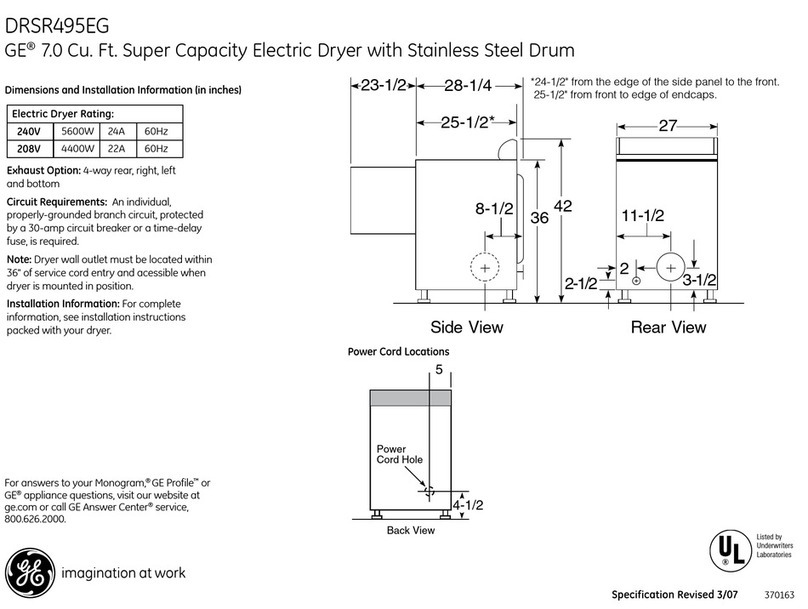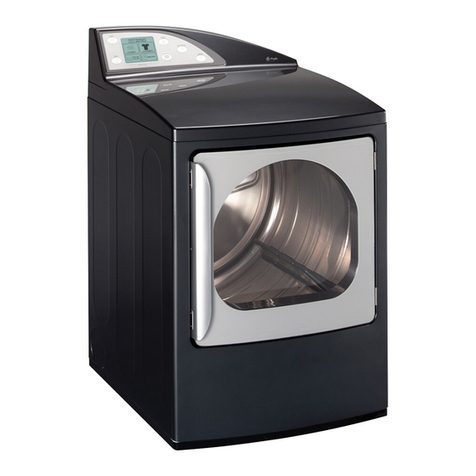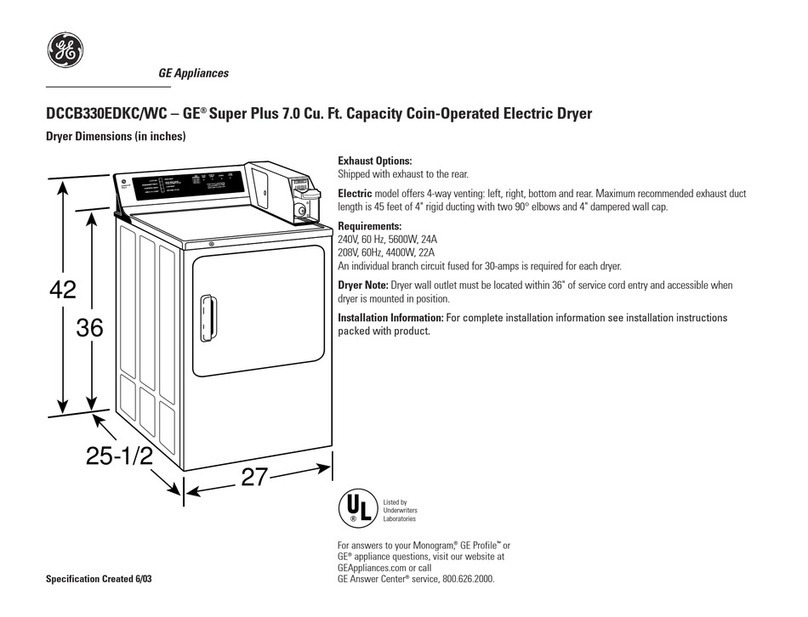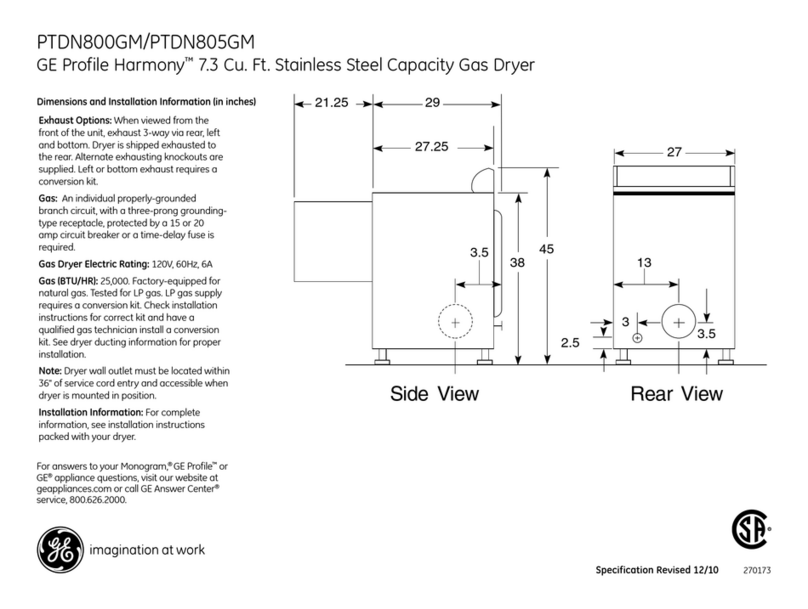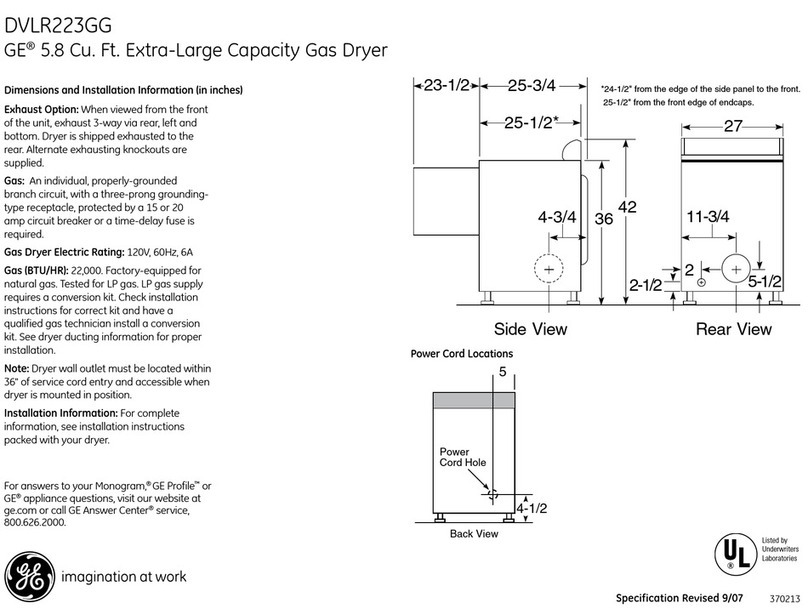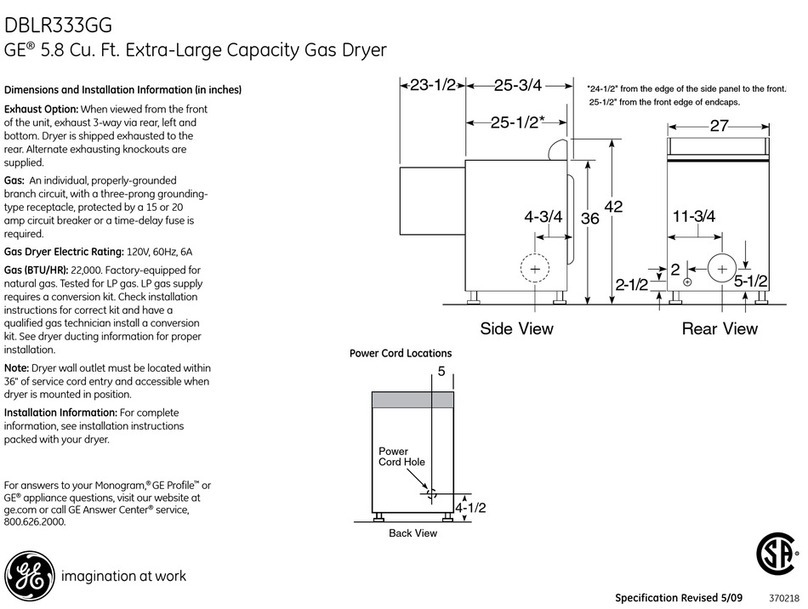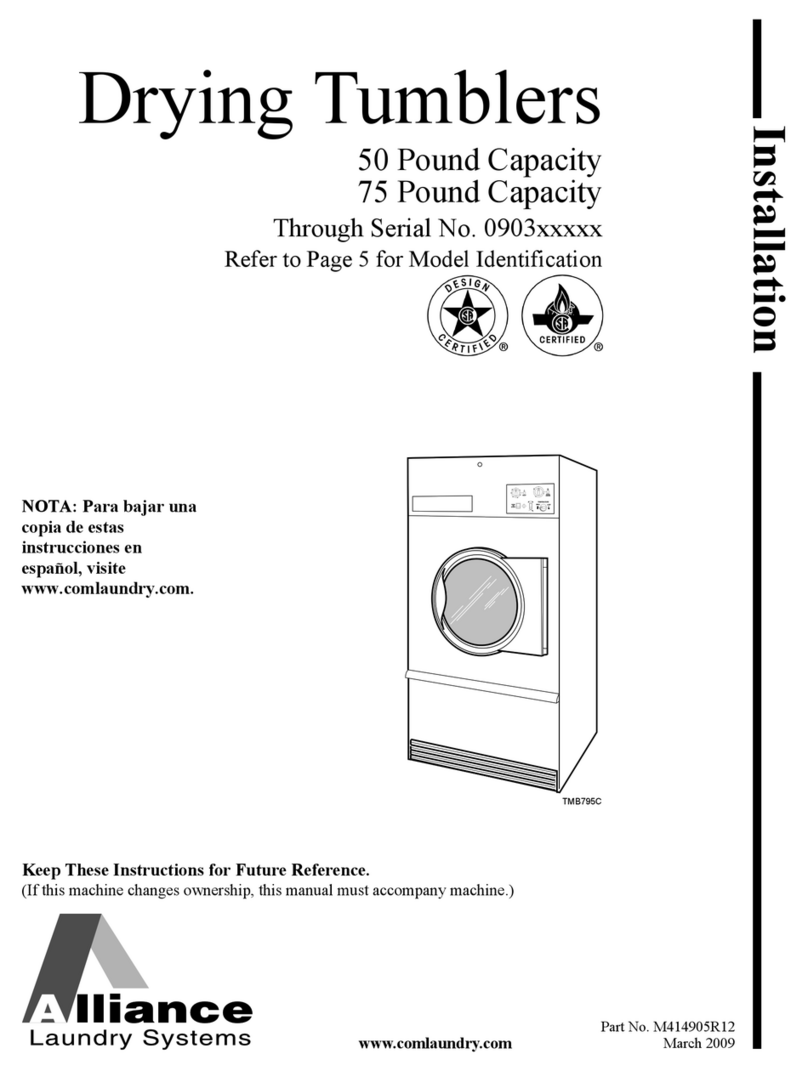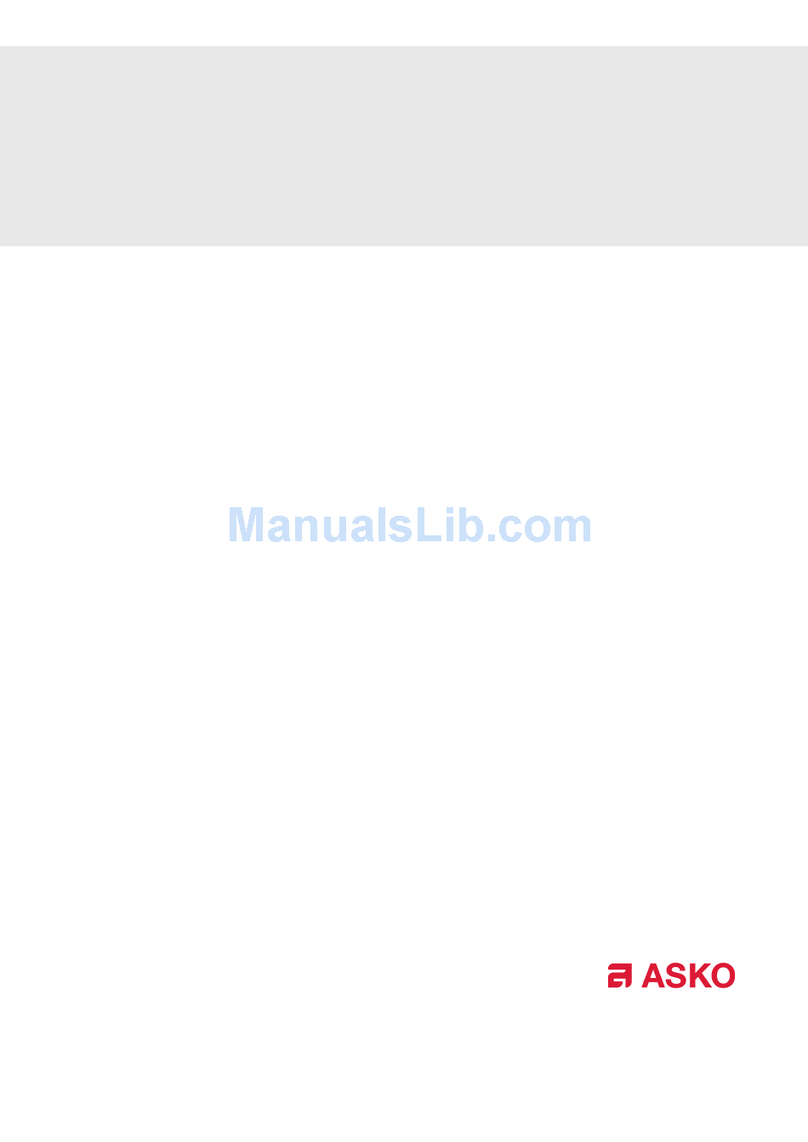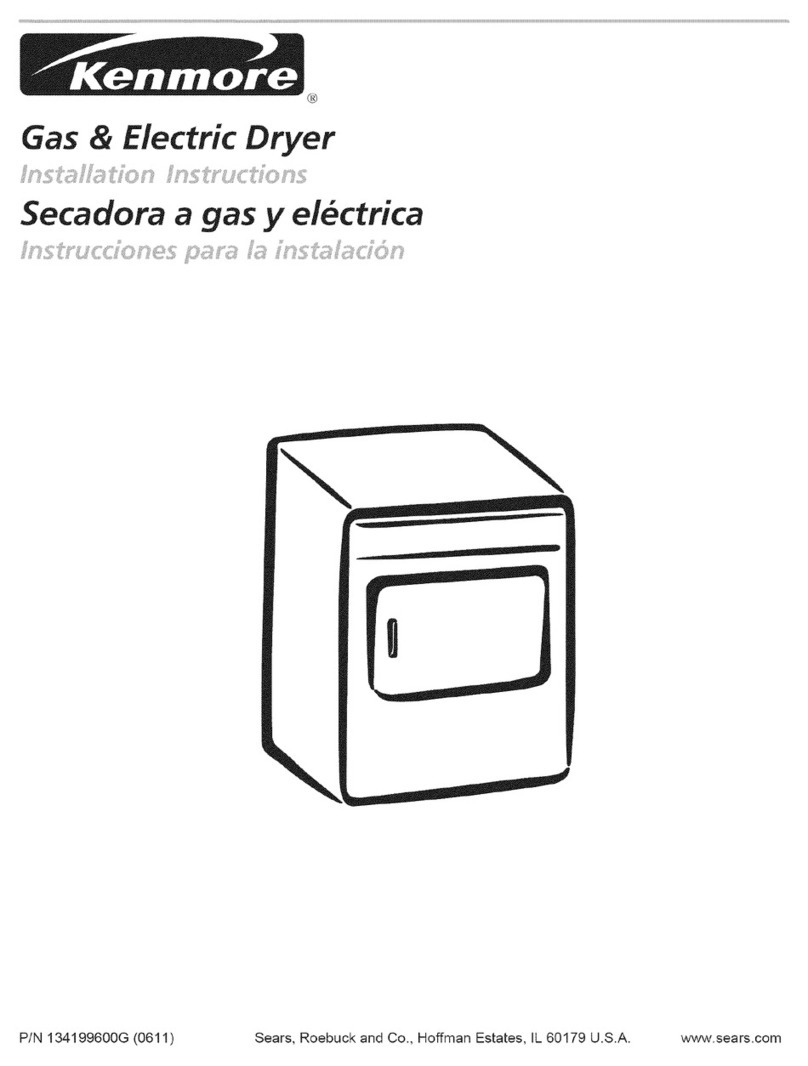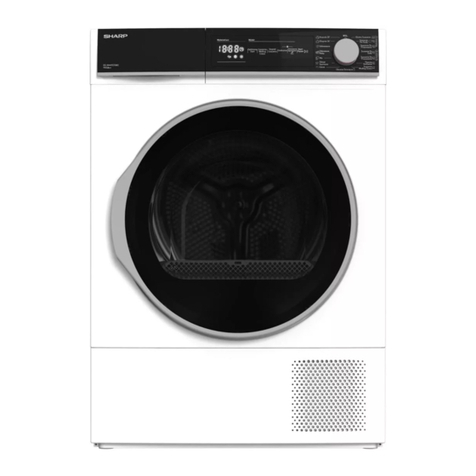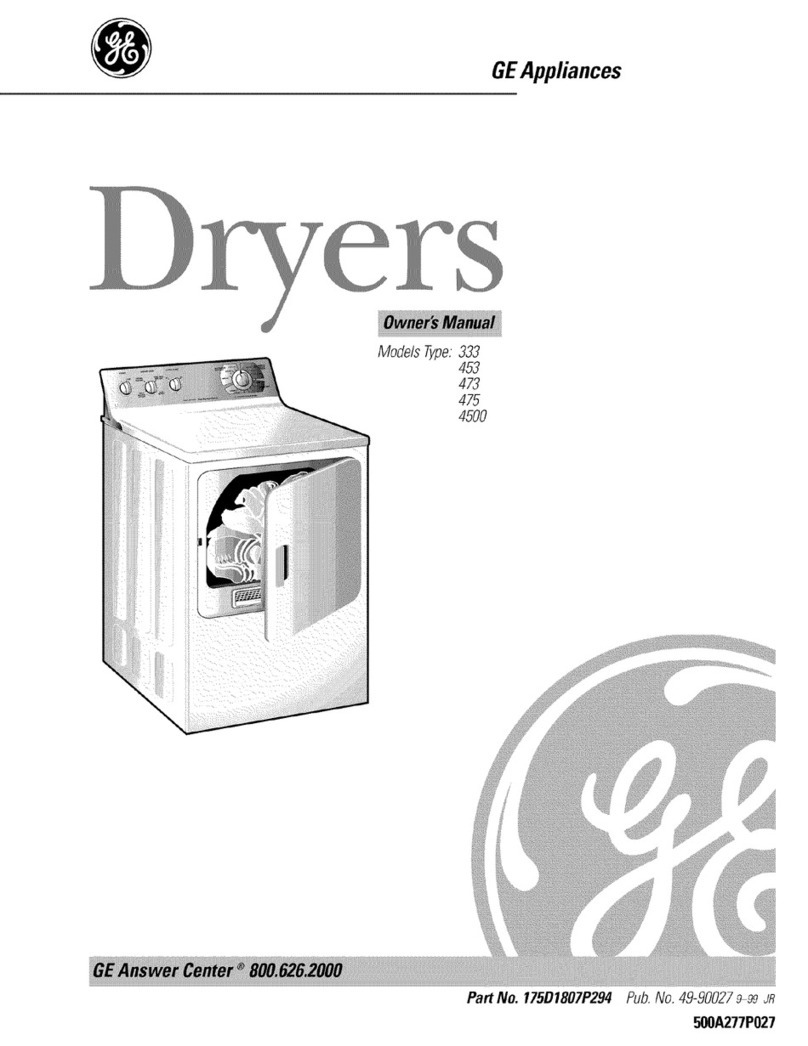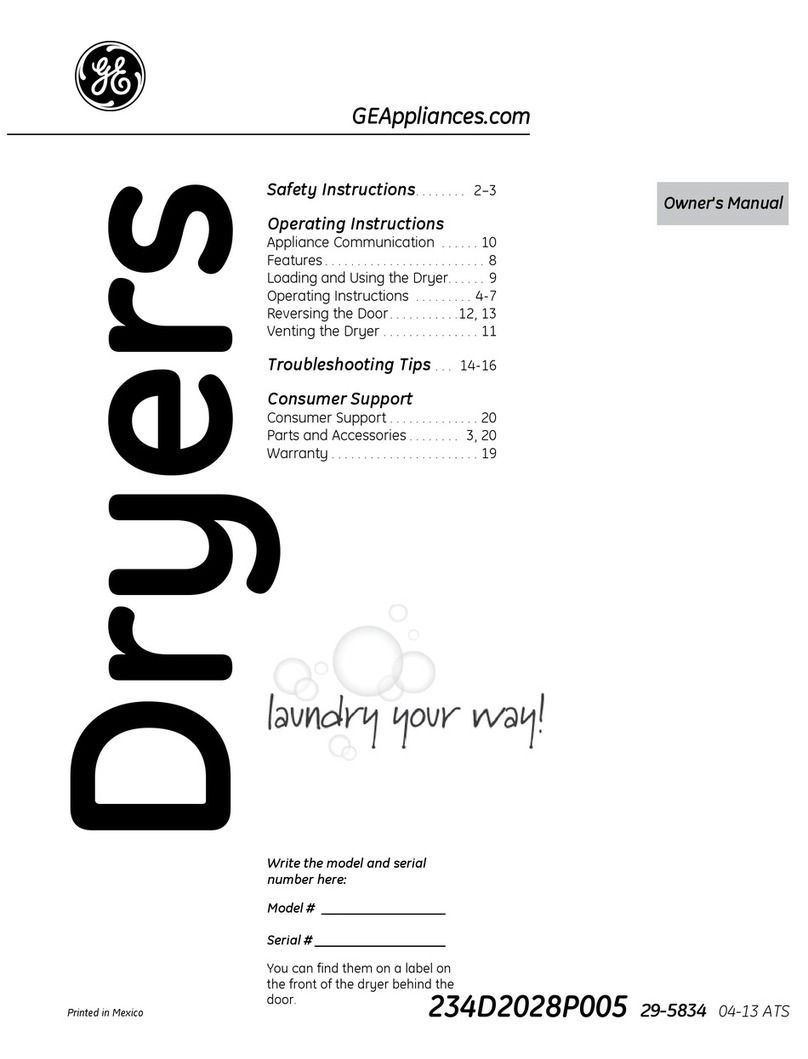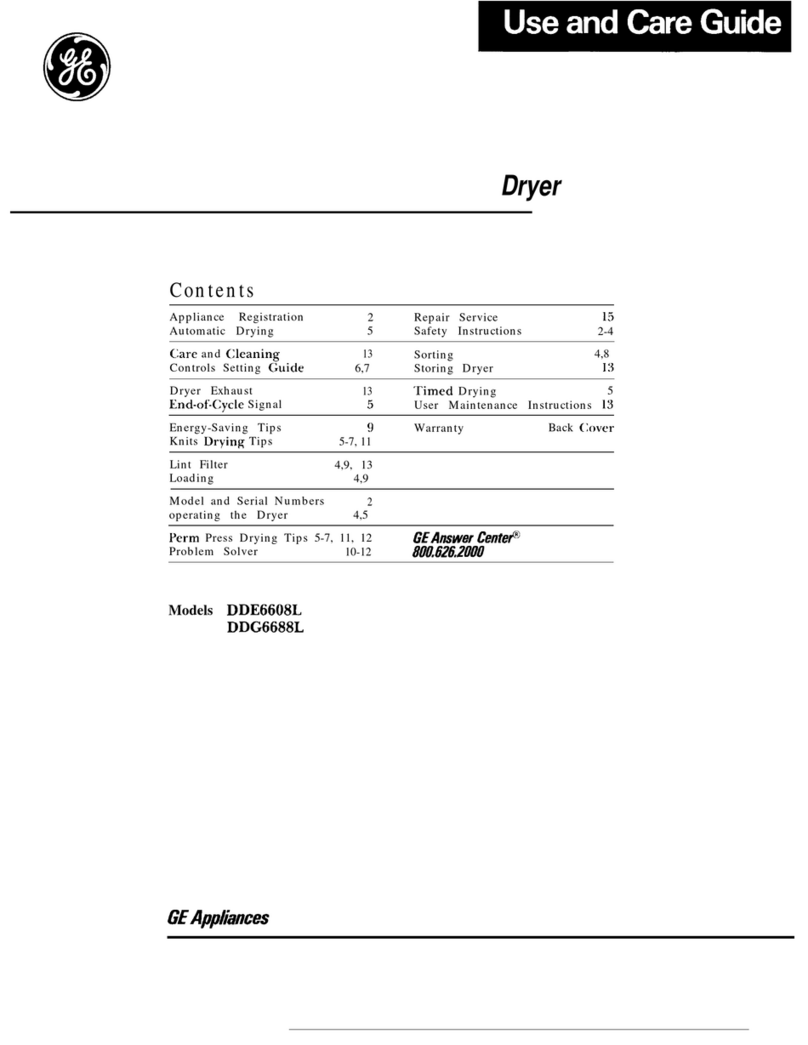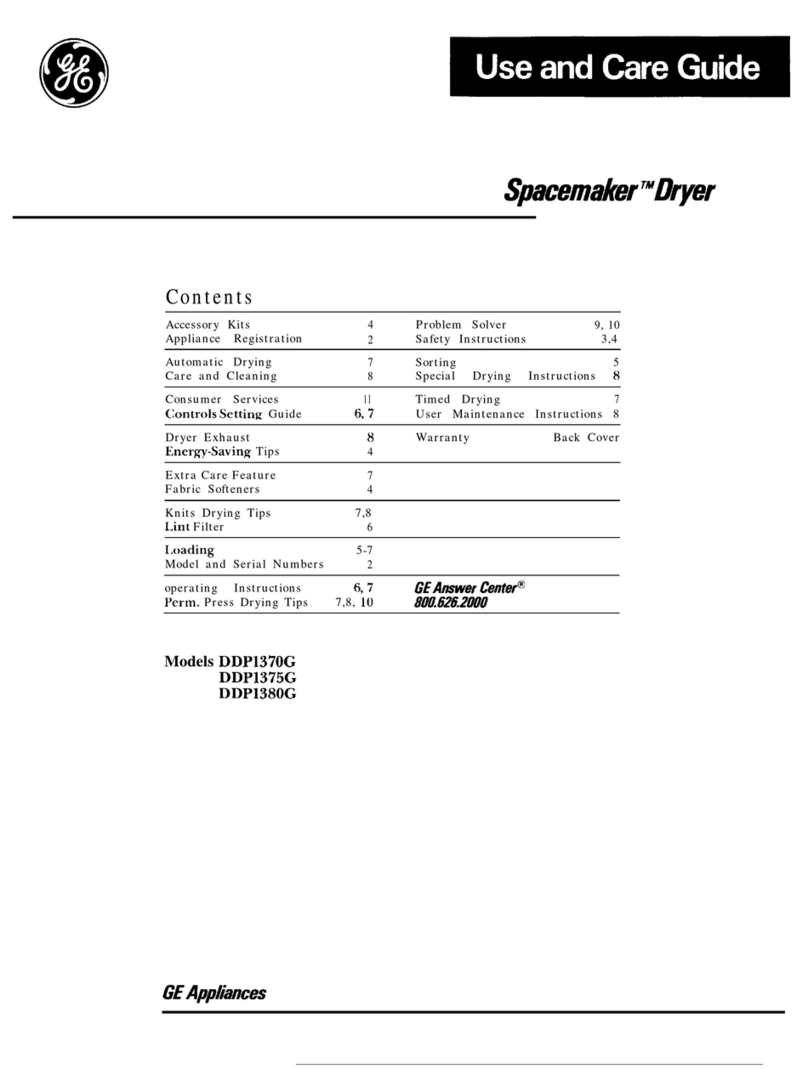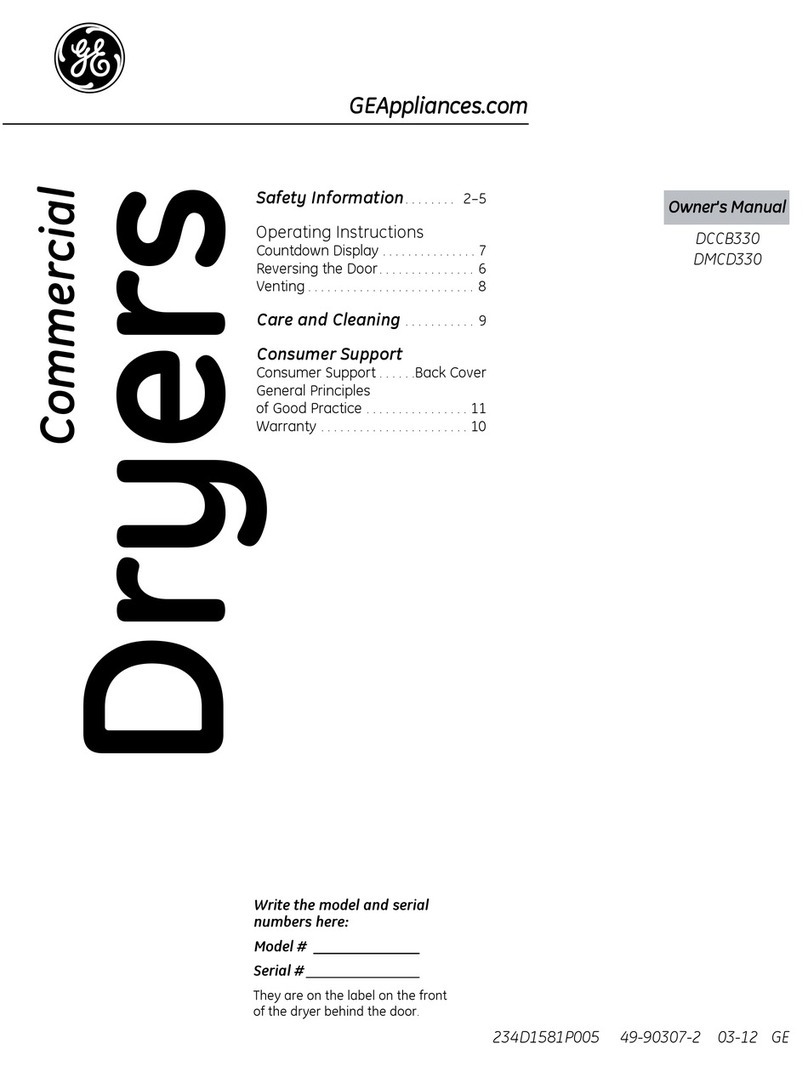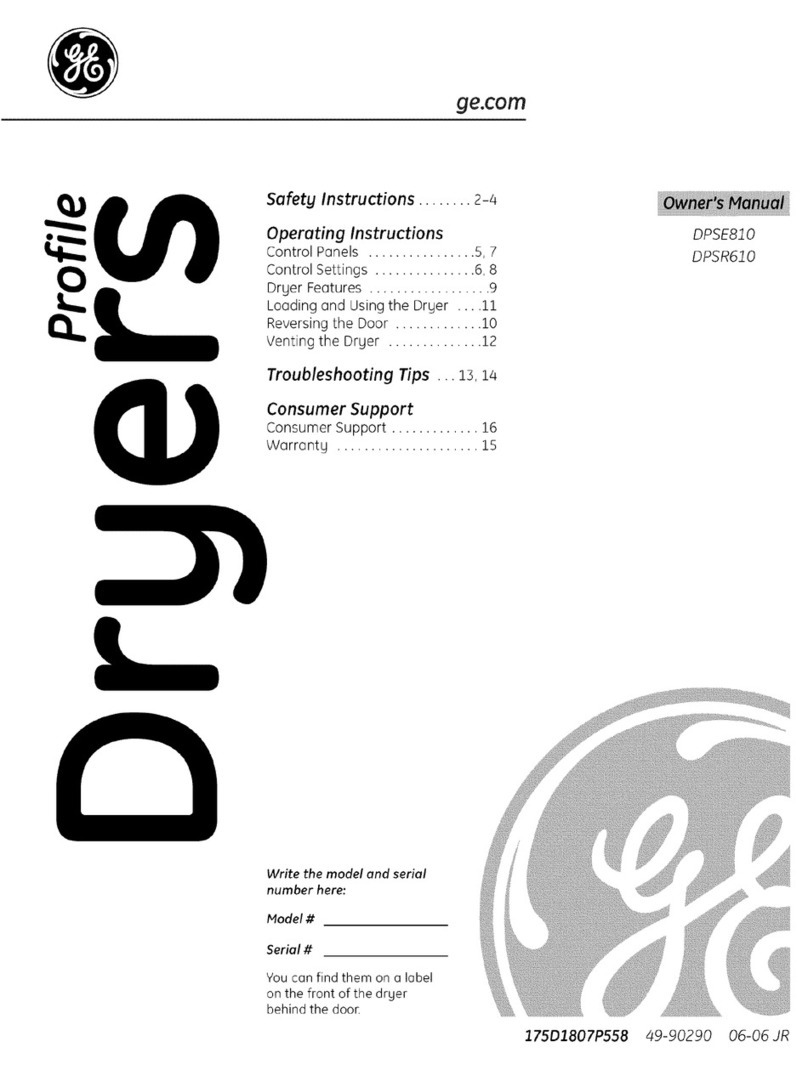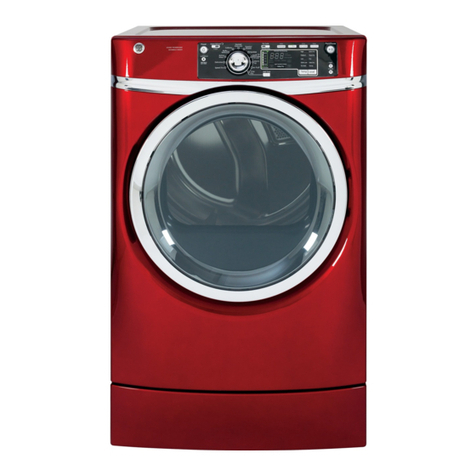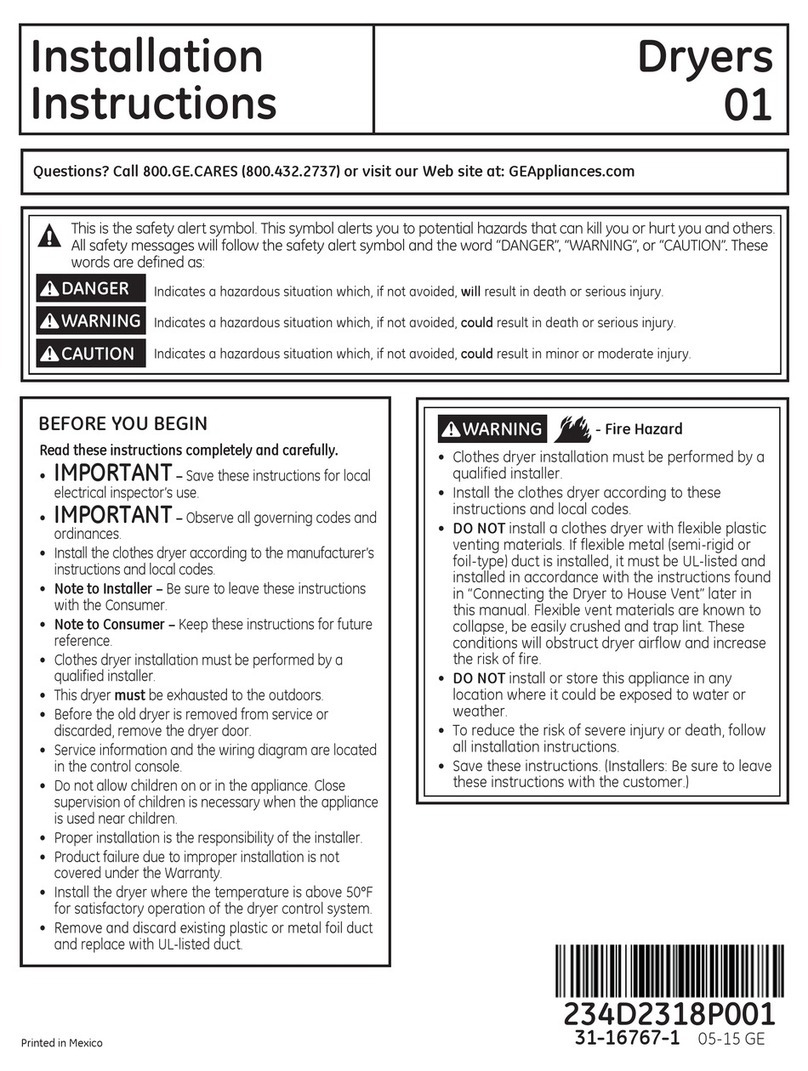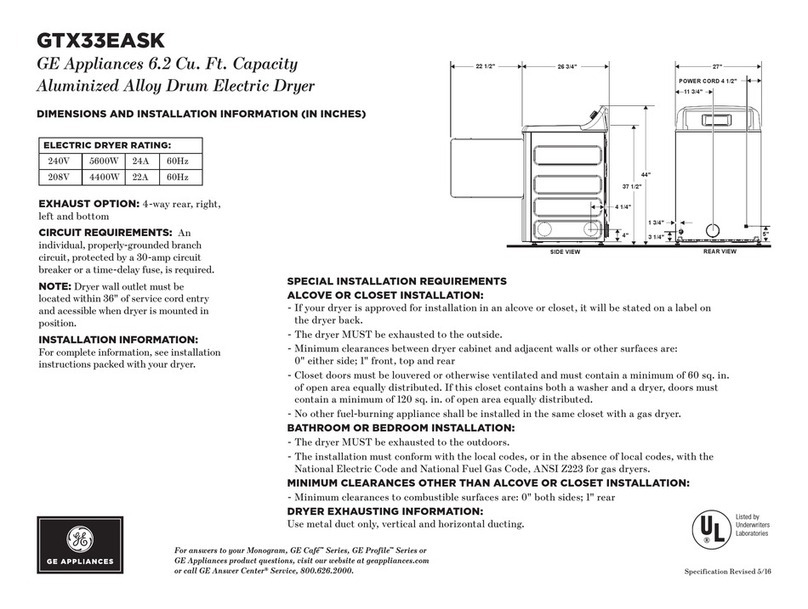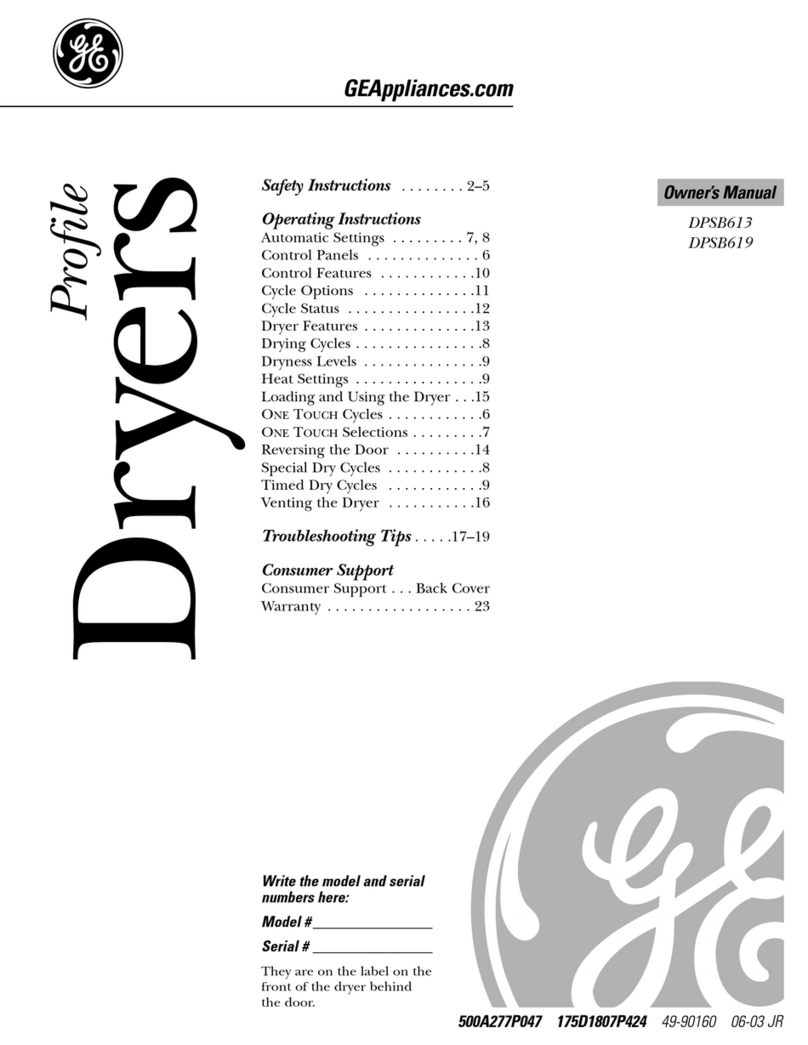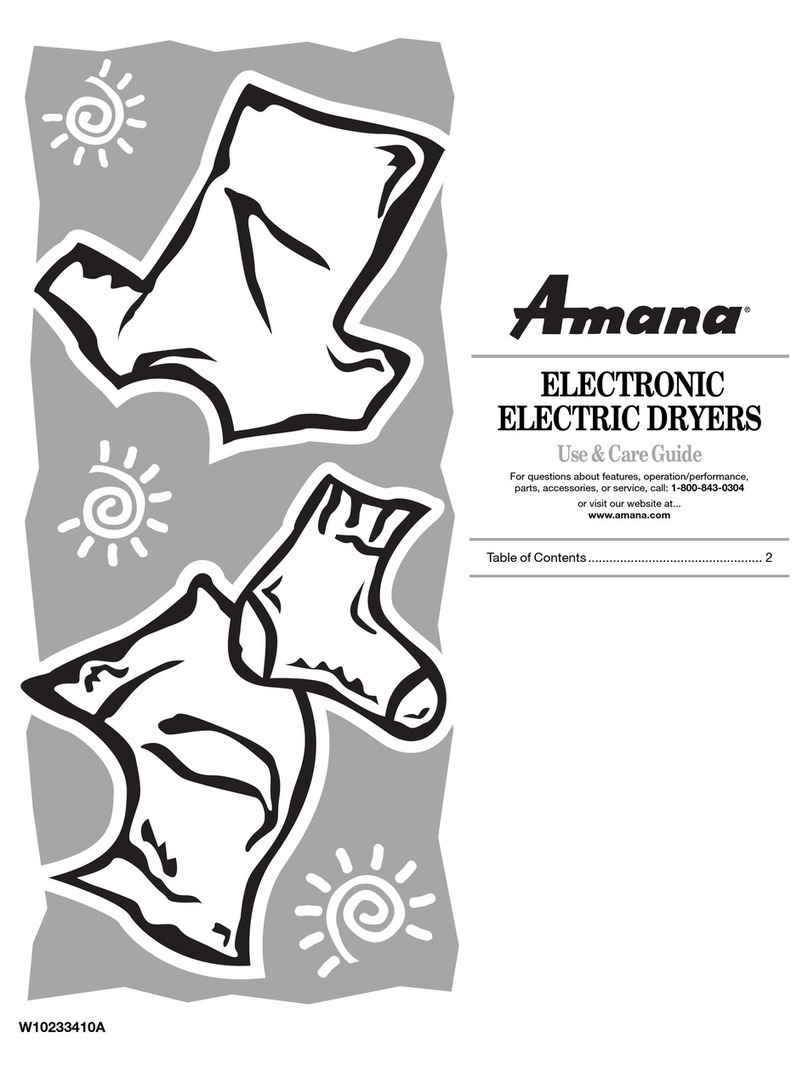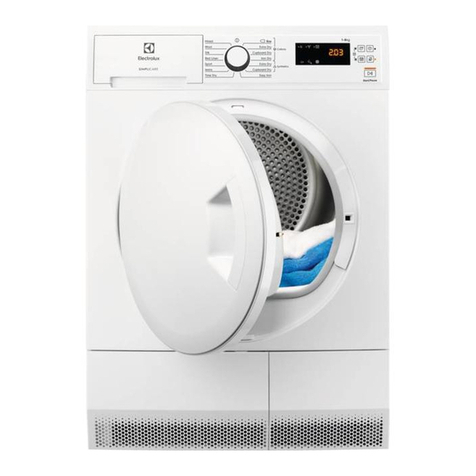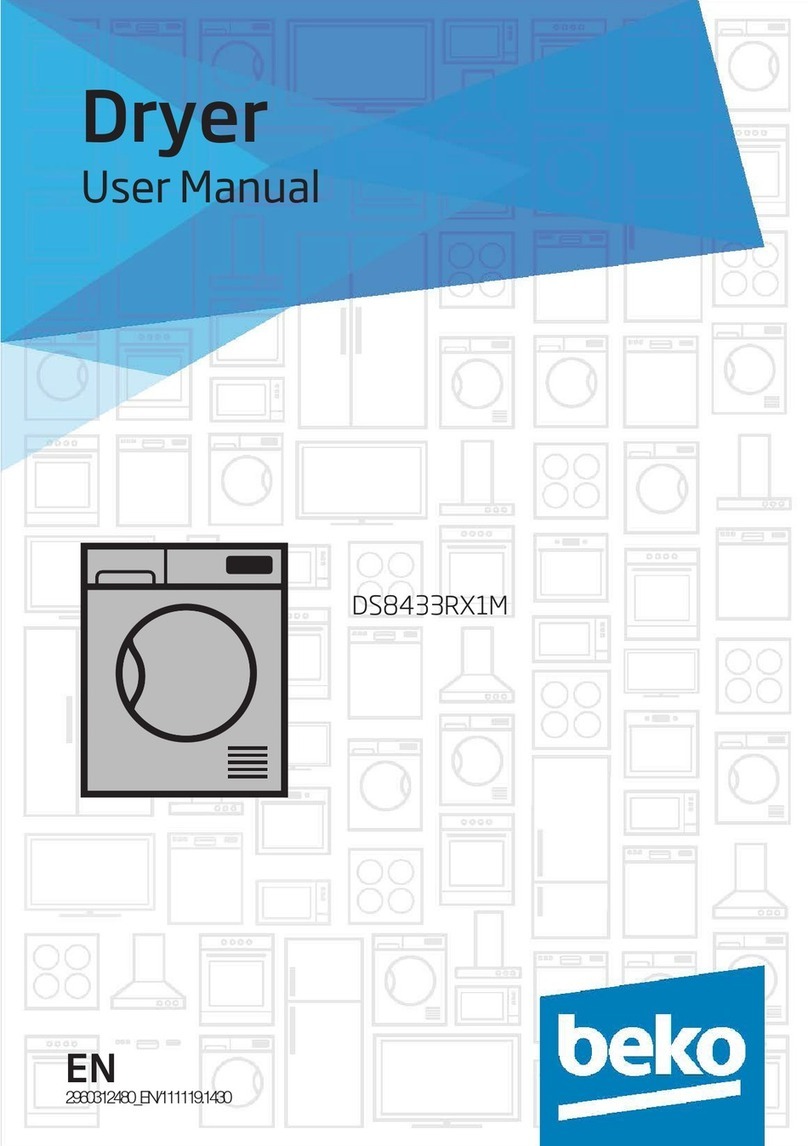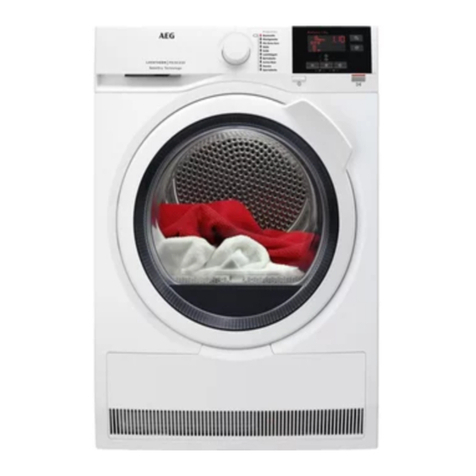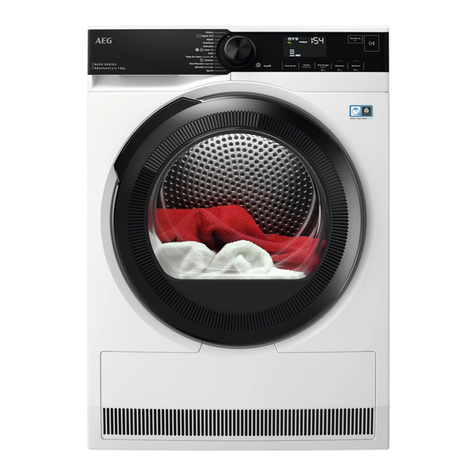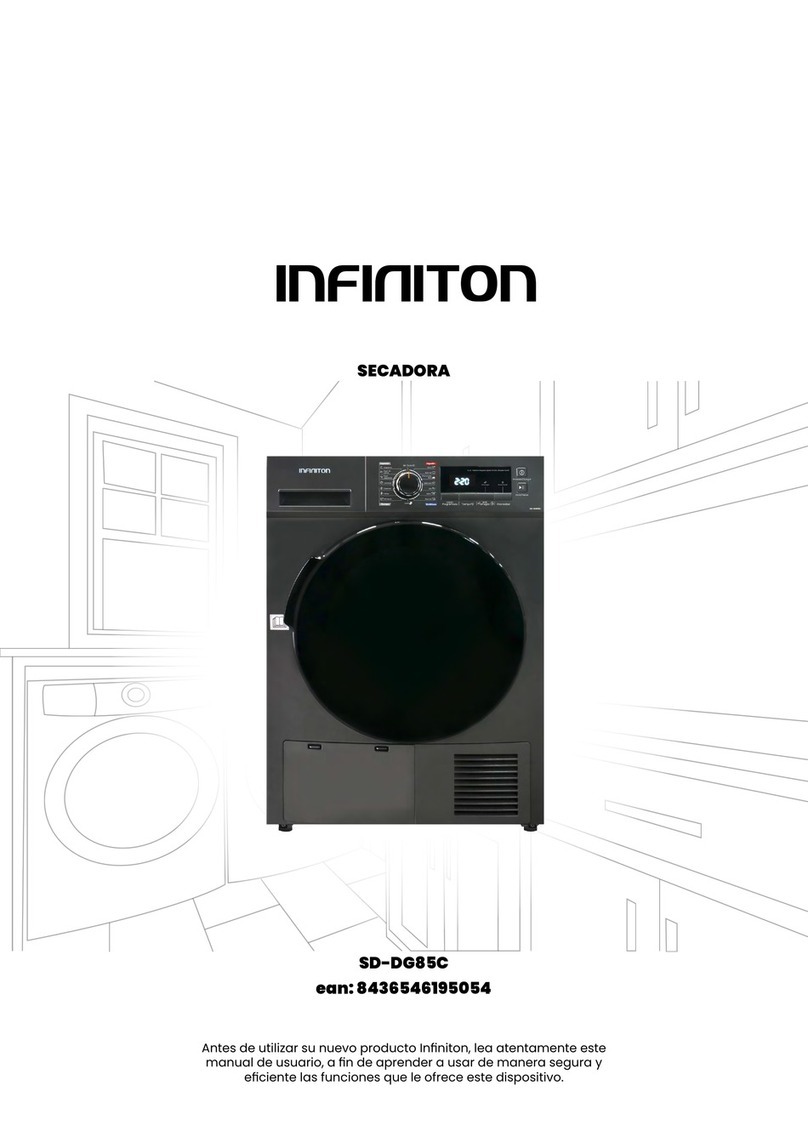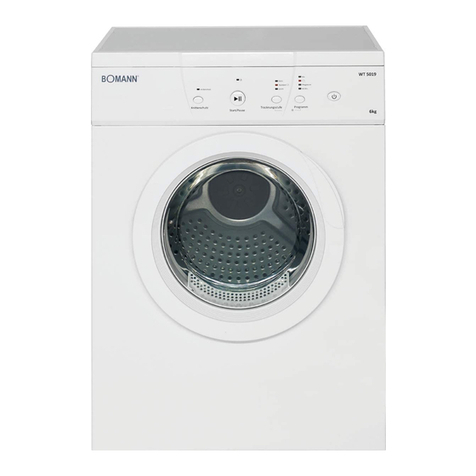
Installation Instructions
REQUIREMENTS FOR ALCOVE OR
CLOSET INSTALLATION
MOBILE OR MANUFACTURED HOME
INSTALLATION
3
- Explosion Hazard
WARNING
Keep flammable materials and vapors, such as gasoline,
away from dryer.
Place dryer at least 18” (46 cm) above the floor for a
garage installation.
Failure to do so can result in death, explosion, or fire.
•Installation must conform to the
MANUFACTURED HOME CONSTRUCTION AND
SAFETY STANDARD, TITLE 24, PART 32–80 or
Standard CAN/CSA-Z240 MH, or, when such
standard is not applicable, with AMERICAN
NATIONAL STANDARD FOR MOBILE HOME,
ANSI/NFPA NO. 501B.
•The dryer MUST be vented to the outdoors. The
exhaust vent must be securely fastened to a
non-combustible portion of the mobile home.
•The vent MUST NOT be terminated beneath a
mobile or manufactured home.
•The vent duct material MUST BE METAL.
•KIT 14-D346-33 MUST be used to attach the dryer
securely to the structure.
•The vent MUST NOT be connected to any other
duct, vent or chimney.
•Do not use sheet metal screws or other
fastening devices which extend into the interior
of the exhaust vent.
•Provide an opening with a free area of at least
25 square inches for introduction of outside air
into the dryer room.
•See the sections for electrical connection
information.
•If the dryer is approved for installation in an
alcove or closet, it will be stated on a label on the
dryer back.
•The dryer MUST be vented to the outdoors. See
the EXHAUSTING THE DRYER section.
•Minimum clearance between dryer cabinet and
adjacent walls or other surfaces is:
0” either side
3” front
3” rear
•Minimum vertical space from dryer to overhead
shelves, cabinets, ceilings, etc., is 1” on top.
•Consideration must be given to provide adequate
clearance for installation and service.
•Closet doors must be louvered or otherwise
ventilated and have at least 60 square inches
(387 square cm) of open area. If the closet
contains both a washer and a dryer, doors must
contain a minimum of 120 square inches (774
square cm) of open area.
NOTE: WHEN THE EXHAUST DUCT IS LOCATED IN
THE REAR OF THE DRYER, THE CONFIGURATION OF
THE DUCTING MAY REQUIRE GREATER THAN 3” OF
REAR CLEARANCE.
Gas Dryers Only:
•No other fuel burning appliance shall be installed
in the same closet as a gas dryer.
•The dryer must be disconnected from the gas
supply piping during pressure testing at pressures
greater than ½ psi (3.5 kPa).
•A 1/8 inch NPT minimum plugged tapping,
accessible for test gauge connection, must be
installed immediately upstream of the gas supply
connection to the dryer.
MINIMUM CLEARANCE OTHER THAN
ALCOVE OR CLOSET INSTALLATION
Minimum clearance to combustible surfaces and
for air opening are: 0” both sides, 1” front and
3” rear. Consideration must be given to provide
adequate clearance for installation and service.
